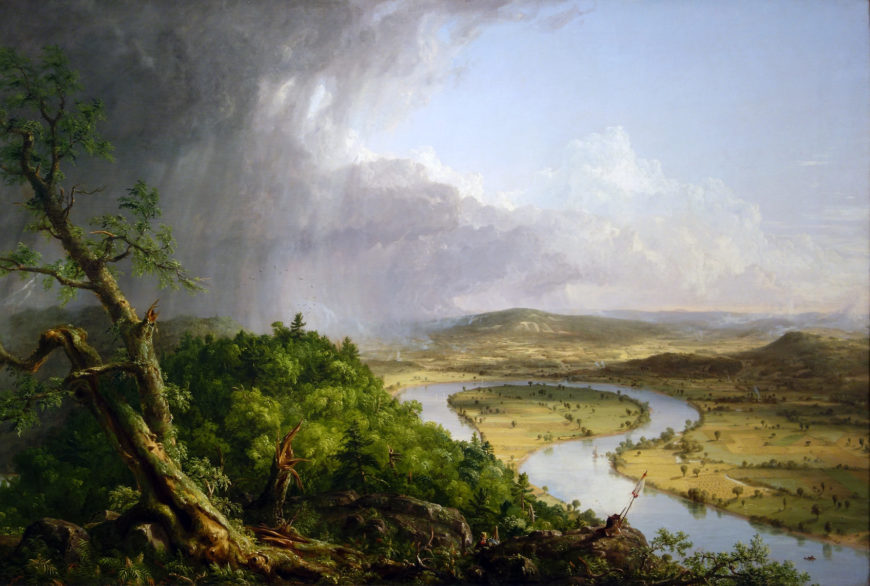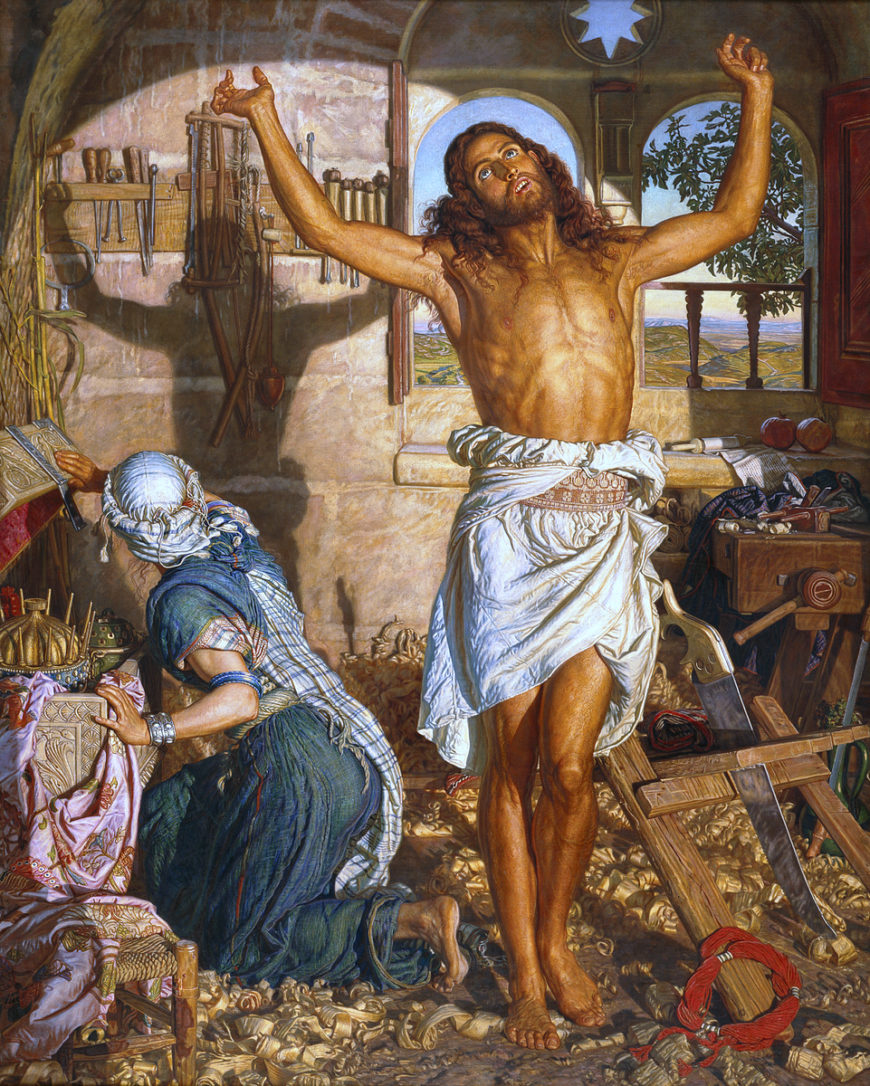Romantic Era Blog
Hudson River School

This painting called The Oxbow was created by Thomas Cole (The founder of The Hudson River School) in 1836. You can see that he created a diagonal line from the top left to the bottom right. There appears to be a thunder storm on the left side of the painting, causing a dark and gloomy vibe. If you look closely, you can see that there is a broken tree stump which shows how powerful nature can be. The left side of this painting looks untouched by man-kind, unlike the right side. You can see that humans have been on the right side of this painting because of the grazed grass, smoke, and more. Both warm and cool colors are presented in this painting by Cole. You can also see the sharped lines, mainly on the left side. There appears to be a darker contrast on the left side.
Pre-Raphaelites

This is an oil painting called Prosperpine by Dante Gabriel Rossetti created in 1874. There is quite interesting story behind this painting. Proserpine was gathering flower when Pluto abducted her. Pluto then forced her to marry him. Proserpine's mother Ceres pleaded to get her daughter back, and she did, but only under one condition. She was not allowed to taste any fruit from Hades. You can see in this painting that Proserpine took a bite of a pomegranate, which was not a good idea. She had to spend six months per year being held captive for the rest of her life.
From the Proserpine's facial expression and body language you can tell she was lifeless in a way. She seems to be frozen, unable to move. This painting gives off cold vibes because of the dark color. The only warmth given is from sunlight shining through a window. The light mainly hits her face, shoulders, and her hands which make them stand out from the rest of the painting. There is mostly dark contrast presented since most of her body is in a dark room. There seems to be slight movement in her clothing. Her dress shows creases which add some flow to this.

Above is a painting by William Holman Hunt called The Shadow of Death created in 1870-73. What's amazing about this photo is that the shadow of Christ stretching looks like the crucification of Christ on the wooden plank in the background. As you can see, Hunt was very talented by his detail and contrast in this work. The shape of Christ is presented by the various shades on him. There is also a lot of flow in this painting; You can see Mary in the look pretty occupied and the way their clothing has movement. There are multiple curved lines that Hunt created on their bodies and their clothes.
Works Cited
Dr. Bryan Zygmont. "Thomas Cole, The Oxbow," in Smarthistory. August 9, 2015, Accessed October 30, 2023. https://smarthistory.org/cole-the-oxbow/
Dr. Peter John Brownlee, Curator, Terra Foundation for American Art and Dr. Beth Harris. "Frederick Edwin Church, The Iceberg," in Smarthistory. April 4, 2020, Accessed October 30, 2023. https://smarthistory.org/frederic-church-iceberg/
Stephanie Roberts. "Dante Gabriel Rossetti, Prosperpine," in Smarthistory. August 9, 2015, Accessed October 30, 2023. https://smarthistory.org/rossetti-proserpine/
Dr. Rebecca Jeffrey Easby. "William Holman Hunt, The Shadow of Death," in Smarthistory. August 19, 2021, Accessed October 30, 2023. https://smarthistory.org/william-holman-hunt-the-shadow-of-death/


I get a soothing vibe from the first artwork and am reminded of summertime in June. I don't enjoy rainy days due to the gloomy weather, but this artwork does a great job of capturing the scene. The clouds on the right side of the image must have required a great deal of contrast to make them look so seamless. When I initially saw this piece of art, I mistakenly believed it to be a mountain, but it turned out to be an iceberg. He did a fantastic job of creating the sun-touched points of the iceberg, which lets us appreciate the amazing detail he added to the lower portion of this picture by varying the contrast and tone. I do agree that this looks realistic. There's something so disturbing about learning this painting's backstory. After reading about what happened to her, I get an uneasy feeling when I look at this artwork. Her face has so much clarity and depth because of the small amount of light, and everything is very darkly toned. This painting's goal is perfectly served by the tones that have been used. The last painting is so vibrant and has so much detail. There are so many sharp lines, and the choice of tone gives me such a bright and joyful feeling.
ReplyDeleteI really liked your art choices I personally would love to own the first painting or, rather, a copy of it. I learned a lot about the second painting it caught my eye but I didn't see it the same way the painter intended it. what I saw was a rock in the desert at first then with further looking I realized there was a boat in front of it, and due to the lighting, I think this is why I mistook the iceberg for a rock. The lighting looks like he may have painted this in a sunsetting environment. The last two paintings were less my style but definitely had an impact on the Era they came from. I think the paintings were different speaking to their time.
ReplyDelete